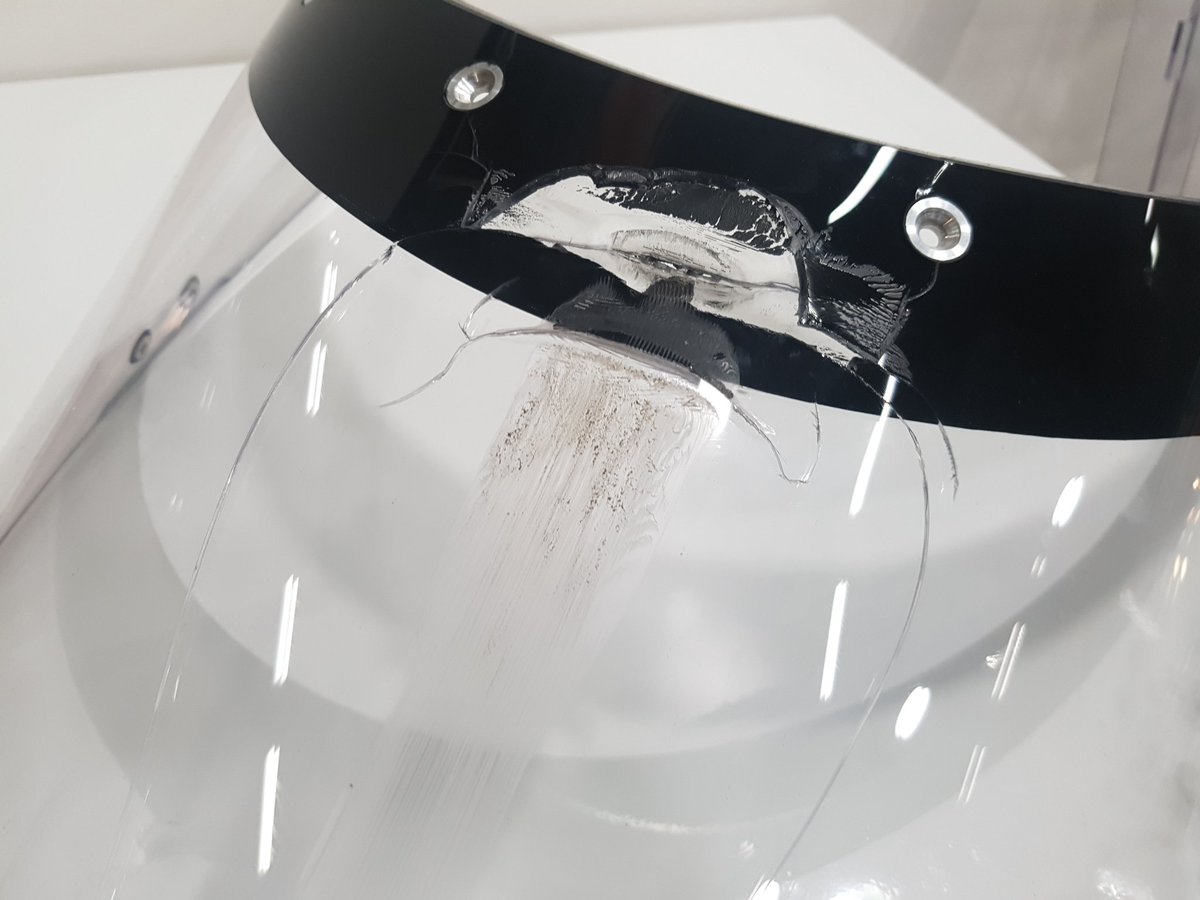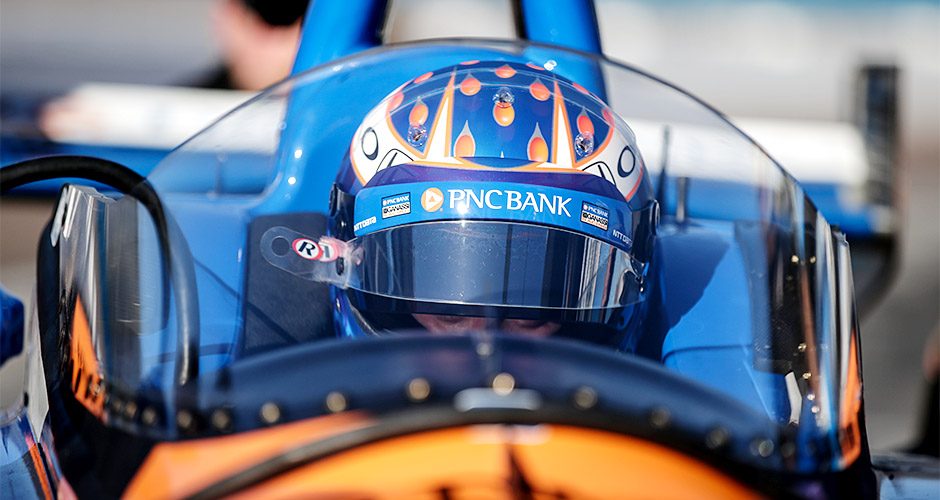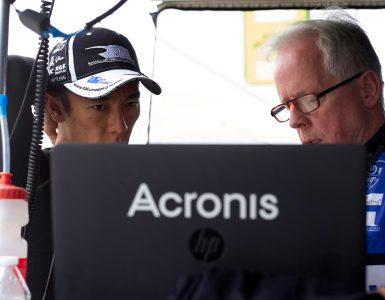In a rare ‘triple-header’ weekend for open wheel motorsport series, IndyCar, Formula One and Formula E went head-to-head to vie for the attention of fans.
Of course, the three series are very different indeed when viewed against one another but share the common denominator of all forms of motorsport, in that danger is always an inherent risk.
The season-ending New York e-Prix was a case in point, when Mahindra’s Jerome d’Ambrosio came barrelling over Andre Lotterer and Felipe Massa’s cars. The Venturi, facing the wrong way down the track, was actually clipped on the Halo by the Mahindra’s front left wheel.
Overtake OF THE YEAR! pic.twitter.com/dstavw8bH8
— Sam (@SamCarpenter_) July 13, 2019
Whilst the Halo driver protection is now mandatory in both F1 and FE series, IndyCar will follow a different route to driver protection for next season. At the running of the 2019 Indy 500, IndyCar announced its next phase in Advanced Driver Protection (ADP) with the introduction of the Red Bull ‘Aero Screen’ for 2020. While the series has been looking hard at further protection for the driver, the link up with Red Bull Technologies was big news.
With single seater categories, such as IndyCar, leaving the driver’s head exposed, it’s becoming a key area of weakness in the car’s safety systems. The driver is vulnerable to injury from debris, other cars and trackside hardware, leading to serious injury and, sadly, previous fatalities.
There’s no desire for Indycar to become a closed-cockpit series, so work has been progressing for many years on a workable solution. Already Indycar has partnered with PPG to develop a clear cockpit screen, using PPG’s Opticor material. In this guise, a simple single curvature screen wrapped around the cockpit and the driver was able see through the material without issues.
This approach was taken after the series felt that the FIA Halo wasn’t suited to Indycar due to the obstruction to the driver’s vision by the upper hoop, while looking up on ovals.
The downside to the Screen, also trialled but rejected in F1, was the strength of the material. While strong, it couldn’t withstand the impact loads of the Halo, some 125Kn (12.7 tonnes). A middle ground needed to be sought.
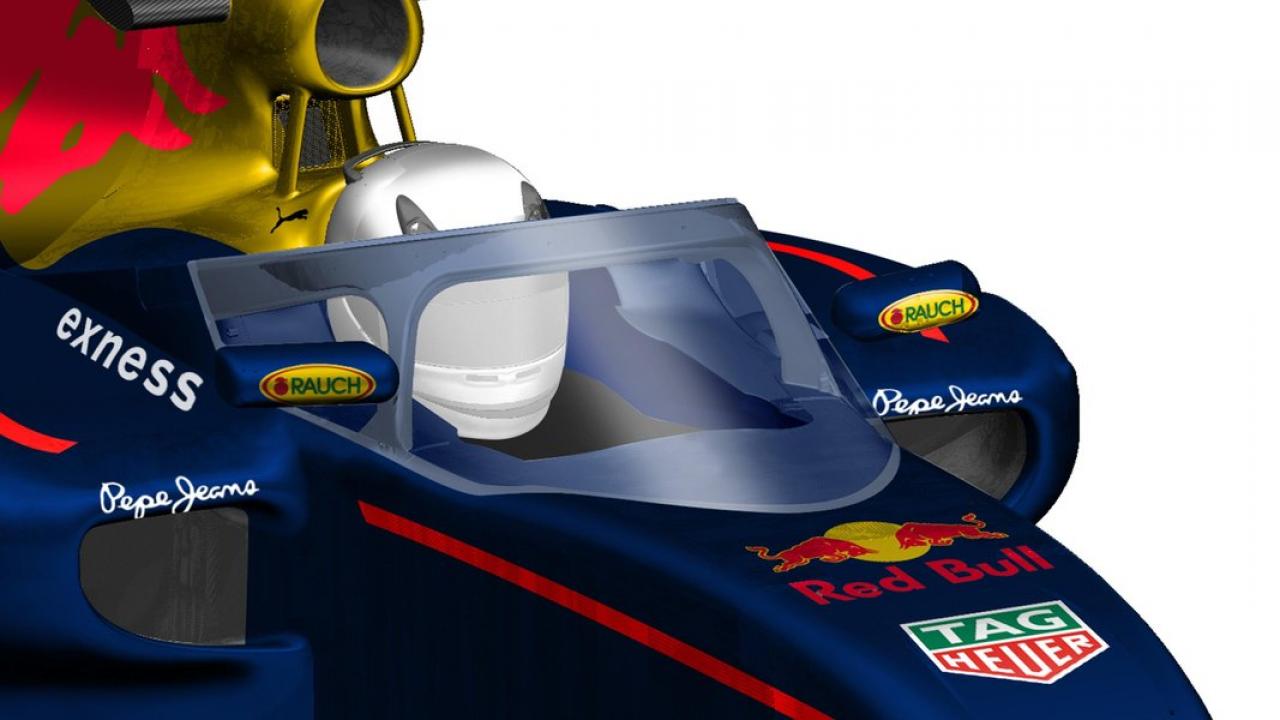
In the interim, IndyCar’s are racing with the Advanced Frontal Protection (AFP) debris deflector. This short vertical spar sits ahead of the cockpit to push away debris heading directly towards the driver. While not a perfect solution, this does give some debris protection to the driver without hindering their vision or escape from the car.
This is where Red Bull Technologies (RBT) comes in. This is the offshoot from the F1 team that acts a design consultant for other areas of the Red Bull operation and eternal customers. It was RBT that developed the Aston Martin Valkyrie super car and the yacht design for Ben Ainslie Racing. Having already tested their Aero Screen in F1, the knowledge of the structures, materials, optics and aerodynamics left them well placed to support IndyCar. This has now led to the Aero Screen being adopted by IndyCar.
Design
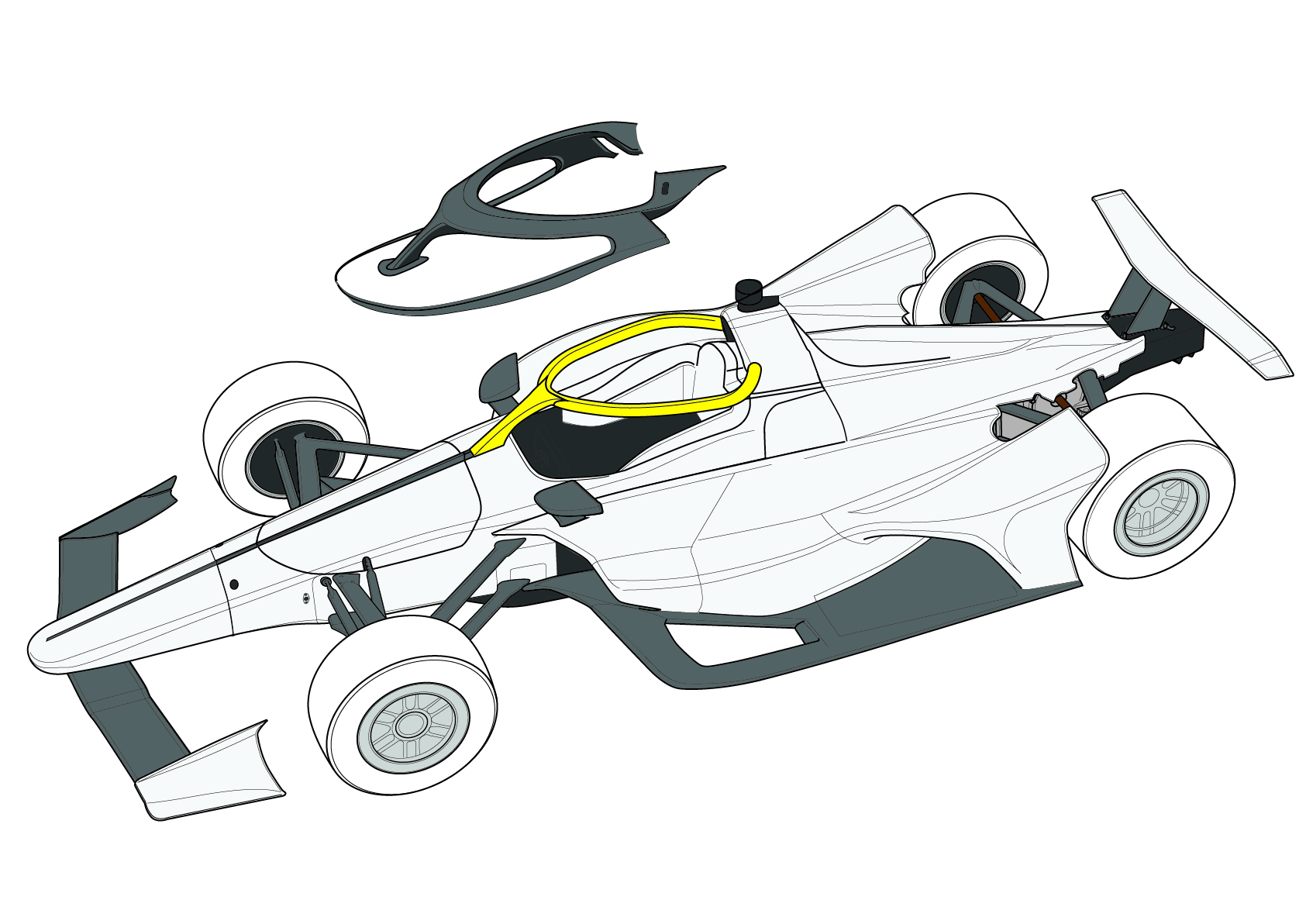
So far, we have only seen the digital renders of the set up fitted to the Dallara DW18 car, but we can see the Aero Screen is far more robust than the earlier IndyCar screen. This solution is effectively a screen and Halo, having both a screen and structural inner frame, which gives the benefit of vision and impact protection.
While the Aero Screen looks like just a screen with a surround to support it, when disassembled the full structure becomes apparent. As with the earlier screen the optical material, supplied by Isoclima from Italy, is curved in just one axis to keep the view through optically clear.
The screen itself affords considerable protection from debris and is made even stronger by being attached to a strong carbon fibre surrounding frame.
But it is the frame and what’s inside that gives the Aero Screen its greatest protection from flying cars and objects. The frame albeit carbon fibre is reinforced by an internal titanium tubular frame, similar to the F1 Halo, but can withstand an even greater load (150kn). Indeed, the front central support for the Halo can be seen through the screen and mounting to the tub in the same position as the AFP fin. This mounting position is beneficial, as the monocoque does not require costly modification or strengthening. The rear mounting position for the Halo appears to be the steel roll hoop. Again, this works because the cockpit sides would need reinforce to support the impact loads from the Halo, whereas the roll hoop is already designed to do that.
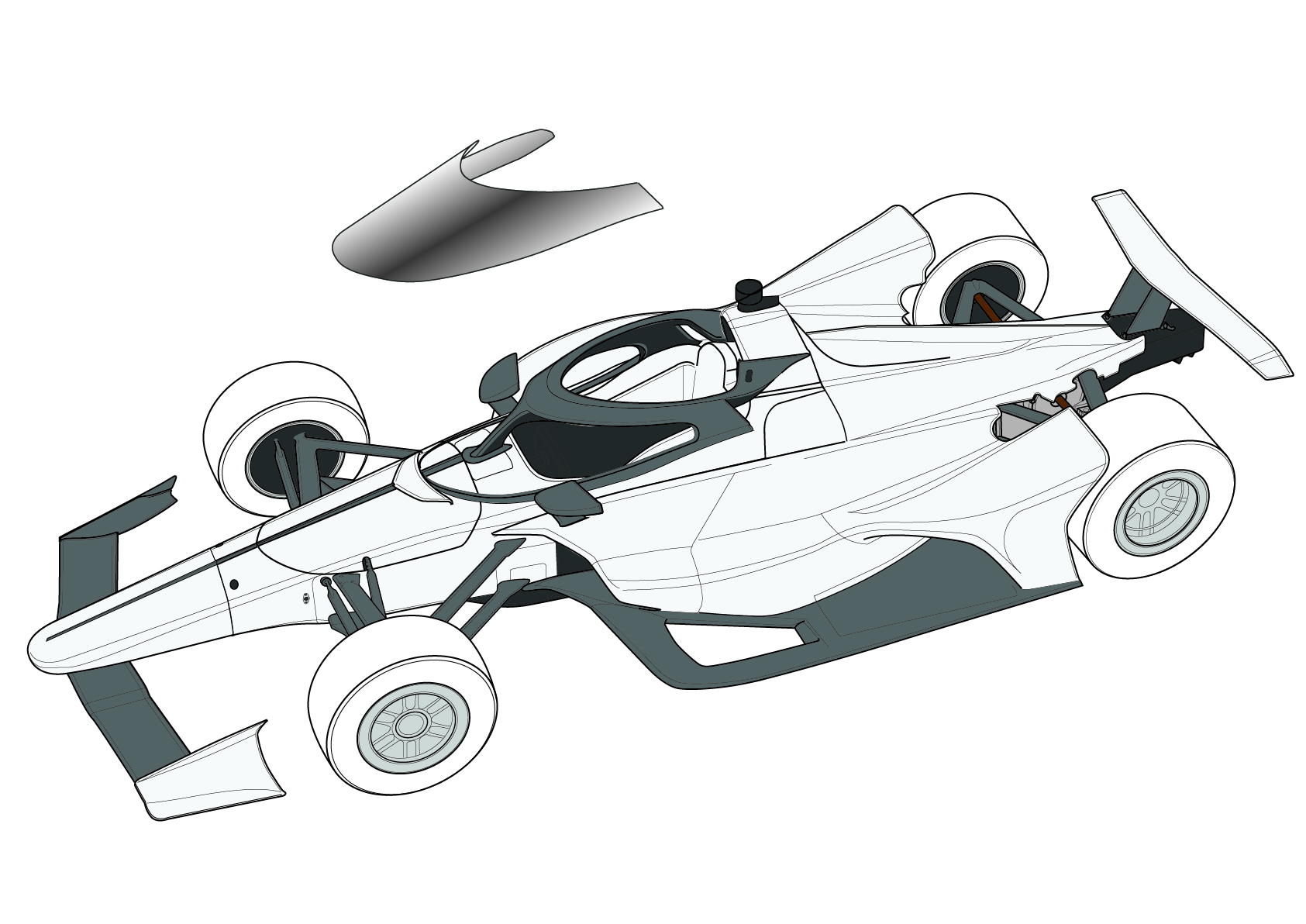
Given the Halo’s safety performance being proven in FIA motorsport, the Aero Screen can be assured of the meeting the impact loads required from Indycar. But this leaves the visibility question unresolved. Given the Halo was initially rejected due to its visual obstruction, the Aero Screen apparently has the same issue, but has progressed to production. Knowing that all the parties involved in its introduction are aware of this potential problem, it’s likely that simulations have been completed to confirm that visibility is not an issue.
Assuming, then, the optics of the screen and the obstruction of the Halo frame are no problems, then the other practical matters also appear to have been considered. Integrated into the laminated screen are an anti-reflective coating on the inside and an anti-fogging heating element in between the polycarbonate layers. Rip offs, like the solution used on helmet visors and LMP endurance cars will be provided to be removed when they top layer is too dirty. Given the frequent pit stops in Indycar, this should not be a major issue. There will also be investigation into a cooling solution for the driver, although the prototype screen has vents made into it to provide some cooling airflow.
The driver’s access in and out of the cockpit is also a concern, but F1 has proven that this is easily overcome. The Aero Screen frame does not encroach over the cockpit opening, AMR Indycar Safety Team will be briefed on driver extrication and in the event of serious fire with the car inverted the Indycar crews will arrive on scene with their safety trucks fully prepared for serious fires within seconds.
Given the extra weight of the Aero Screen, there will be a Centre of Gravity impacting on the cars handling. Plus, the screen’s shape will influence airflow downstream particularly with the rear wing being affected. As IndyCar is a spec series, the impact will be the same for all teams and not likely to have any noticeable adverse effect on the performance of the car.
Red Bull Technologies will now continue to develop the Aero Screen with Indycar and Dallara ahead of its introduction next season.
